The weather forecast for our five-day Whitsunday kayak was bad enough to generate a discussion of postponing the whole trip. Fortunately, no one wanted to pull out, and the forecast proved to be wrong.
After much organization to ensure we had enough food and water to last 5 days, we were picked up with our kayaks by a ferry for a scenic ride around the bottom of Whitsunday Island. An hour later we unloaded onto the white powdered sands of Whitehaven beach, world-famous for good reasons, where we set up camp. Then, eager to make the most of our time, we paddled across to a nearby island to spend the late afternoon snorkeling around a headland.

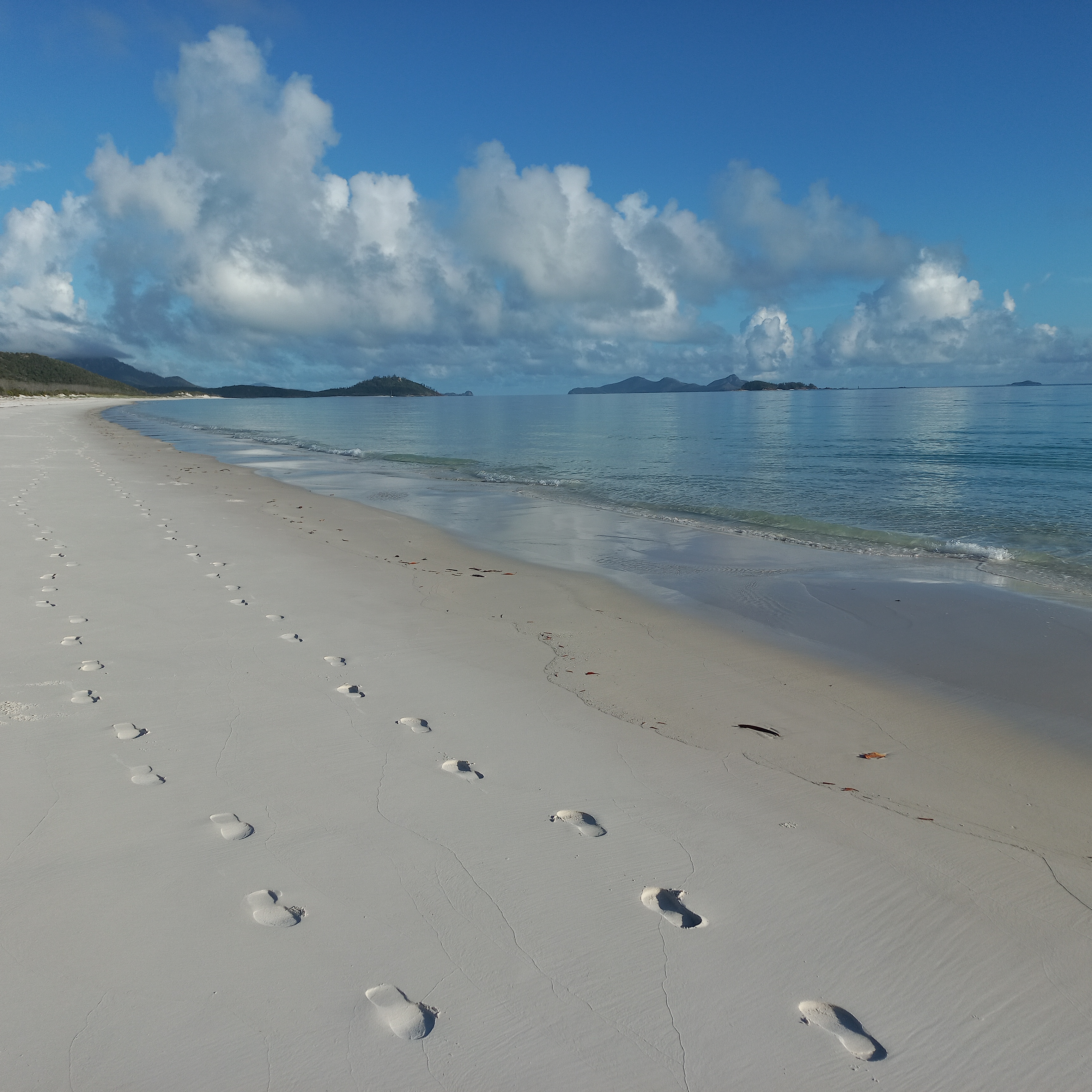
It quickly became obvious why the Whitsundays are so popular. In between kayaking, we had plenty of opportunities to do short hikes and snorkels, each viewpoint and beach with its own unique beauty.
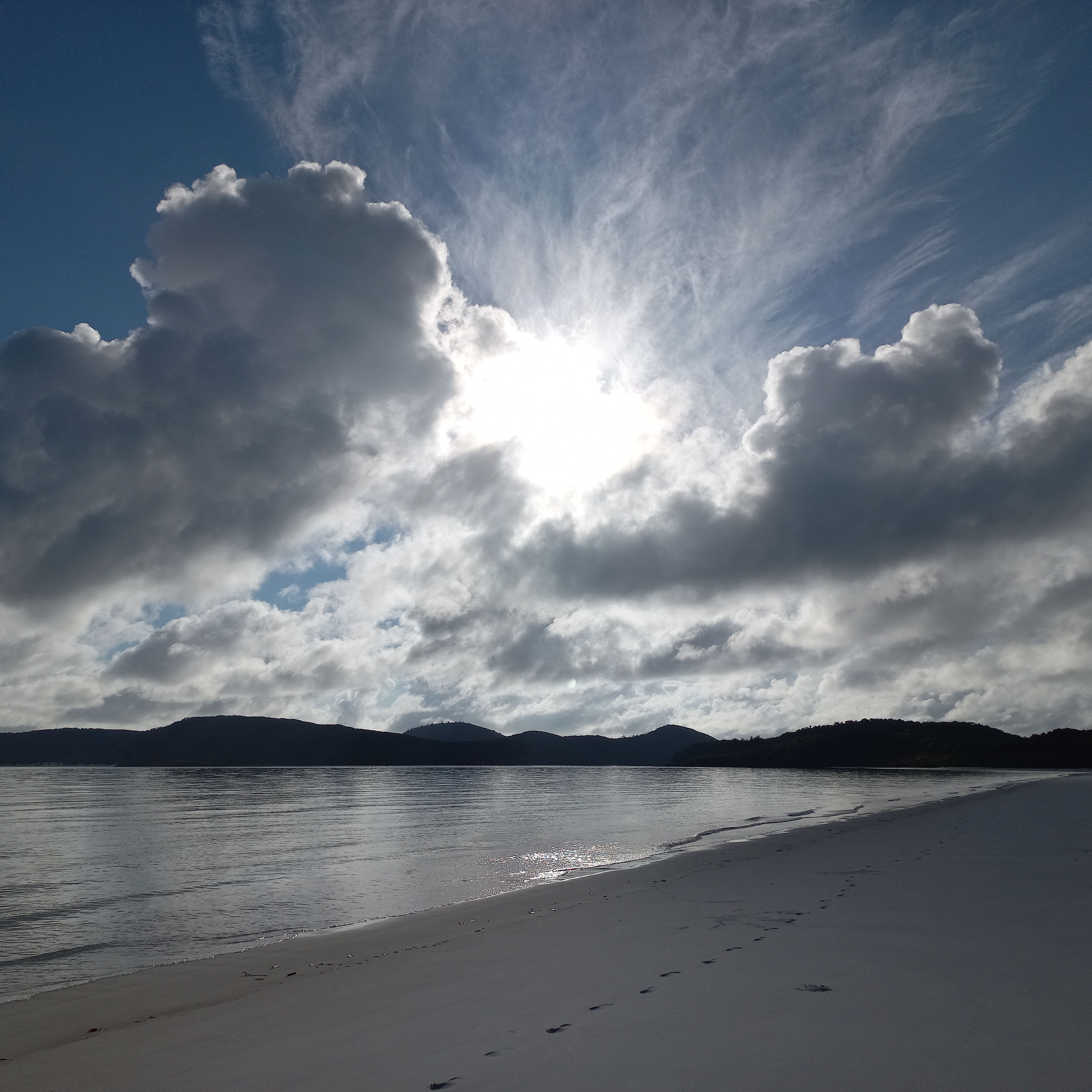
Only on one morning did it pour down in the predawn hours. The rain stopped just long enough for us to semi-dry, eat breakfast, and pack. It then pelted on us once we were out at sea in our double kayaks. A delightful experience. Our waterscape was shrouded in mist. Pale luminescent spheres pinged off the olive-green water around us, the heavy drops seeming to bounce off the ocean’s skin.
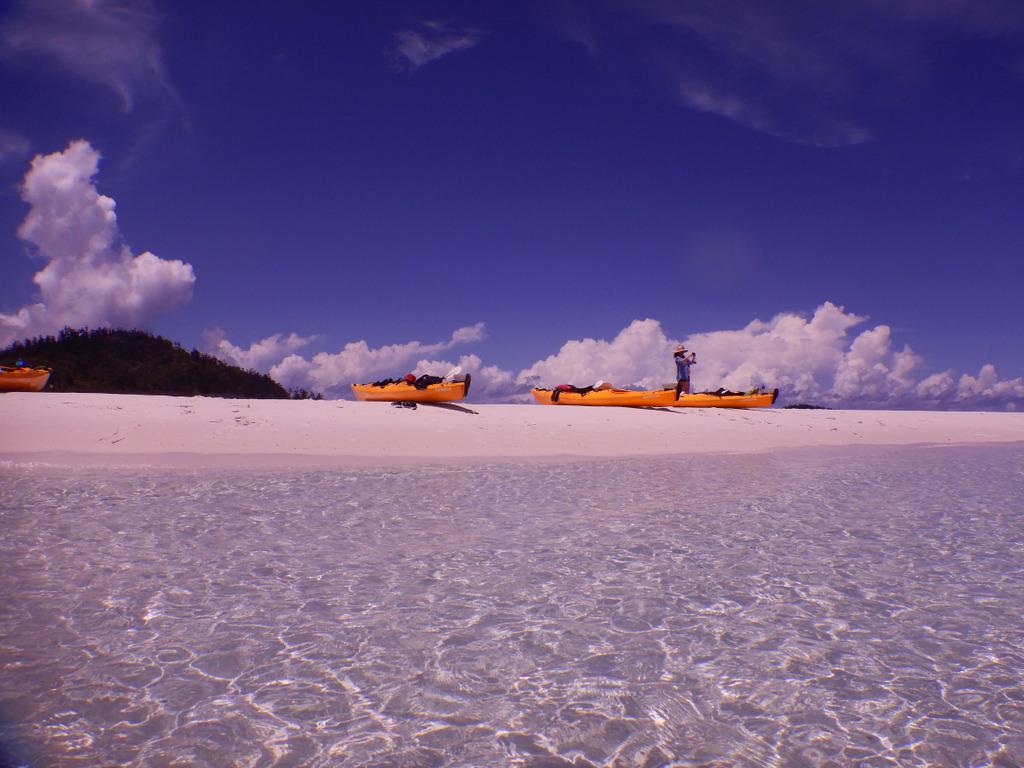
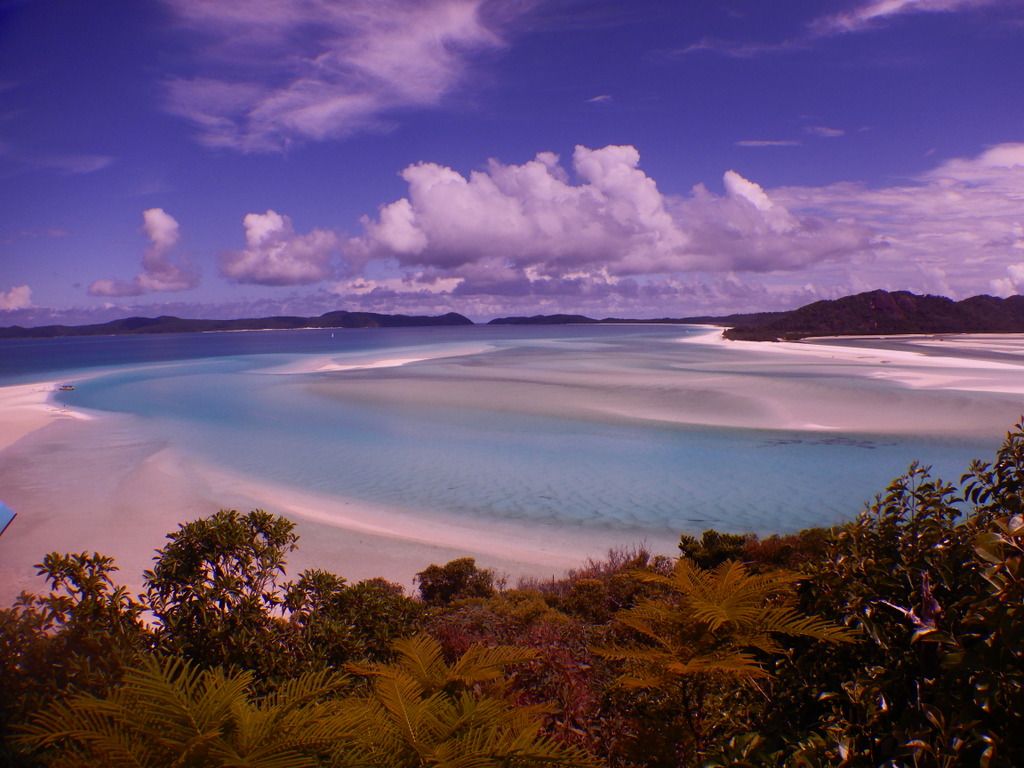
Although the view from the northern lookout over Whitehaven beach is to die for, our most spectacular walk was from Crayfish Beach up to a viewpoint on the third evening. One of our group, a fit determined engineer, was pregnant, but undaunted by the 1-hour hike to the top, as she climbed steeply over rocks and tree roots, wearing thongs.
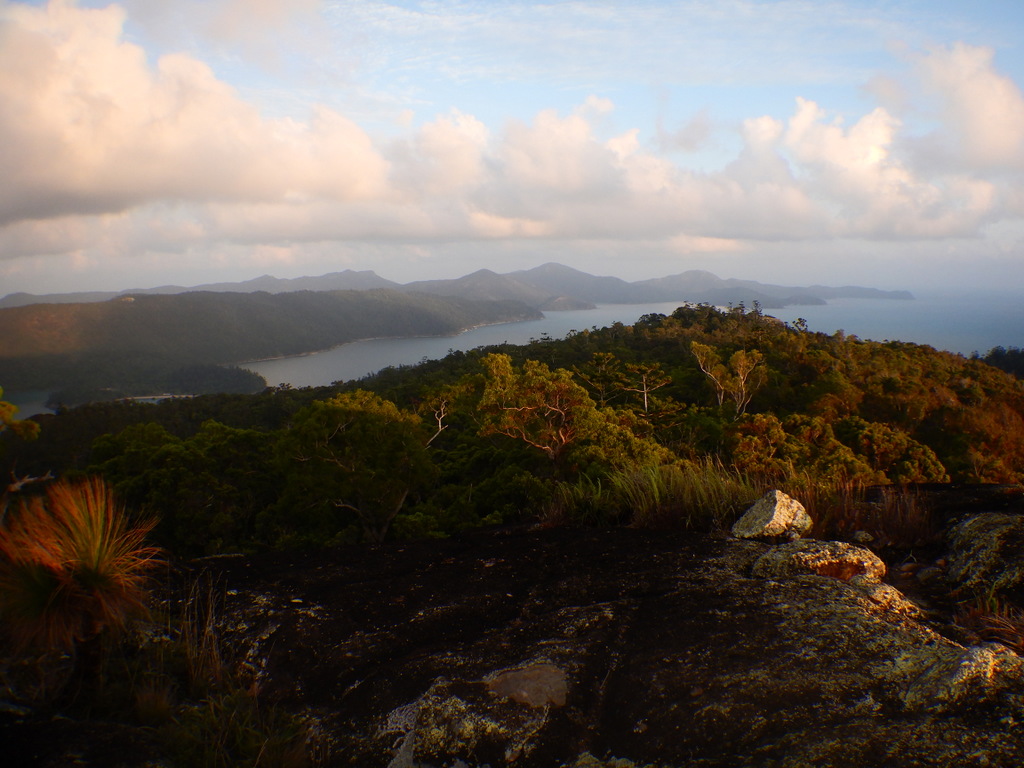
At the top were interrupted 360 views of Whitsunday and Hook Island, and we were treated to a spectacular sunset. The whoop-whoop-woos of several peasant coucals echoed across the tops of the forest canopy. With the sun below the horizon, we descended along the craggy backbone of Whitsunday Island almost in the dark, the sky streaked orange and red all around.
On our final morning, we had a spare couple of hours before pick up from our campsite, a sheltered sandy cove. To kill time, we paddled to revisit a nearby beach and filled our now-empty food bags with rubbish. It was sad to see a couple of these smaller more windswept beaches covered in plastic.
After our pickup arrived to return us to Airlie beach, we were reminded of what the Whitsundays means to so many. We shared our small barge with 3 scantily clad Brazilian couples. Already tipsy at 9 AM, they’d missed their assigned collection time and our barge was forced to do a repeat trip. Crates of alcohol and empty bottles were loaded. The gorgeous girls gave everyone an eye-full, with their tiny bikini tops, and their slim G string bottoms openly displayed as the breeze fluttered tiny skirts upward, Marilyn Monroe style. With our salt impregnated hair, clothes, and our zinced faces, we looked worse than poor cousins, even though that was not how we felt.
Our captain dashes our self-satisfaction at leaving the beaches cleaner than we found them when he tells us that the big freighters from overseas dump much of their rubbish overboard in the nearby shipping channel to avoid some of the hefty disposal fees due on docking.
‘Another couple of weeks it will all be back there again,’ he says, ‘But good work anyhow!’